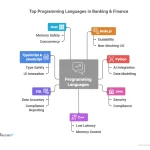
Economic inequality, rich and poor gap, unfairness income, different money people being paid concept, white rich businessman standing on high salary coins tower with poor black man on low coins stack.
The U.S. wealth gap continues to widen and is now larger than ever. In fact, the wealth gap is so large that the median family has nearly two times as much money as the bottom 50 percent. According to the Federal Reserve, this gap has grown by nearly 70 percent since 1989. The gap was also larger in 2016, when the wealth of the bottom 50 percent was only 2.5 percent. Here are some statistics to illustrate the widening wealth gap.
One of the most significant reasons the Black-white wealth gap is so large is that blacks have historically been treated unfairly. From slavery and the Jim Crow South, to current institutionalized racism, black people have been discriminated against. Moreover, these policies have created or maintained hurdles for African Americans to accumulate wealth. Creating and preserving wealth is essential for household economic security, protection against the effects of economic crises, and political power. But to do this, we must address the root causes of the Black-white wealth gap.
The wealth gap has been a persistent problem for several decades. It has persisted despite the recent financial crisis and pandemic. Black households resorted to savings for emergencies and layoffs. Yet, today, the wealth gap is even larger. While wealth disparities are still large, education is the key to closing them. The vast majority of households in the U.S. are underrepresented in higher education and economic status. As a result, they have a harder time catching up.
The biggest factor contributing to the rising gap between the rich and the poor is education. The United States experienced a period of high economic inequality in the early 1900s, but this changed with the shift to knowledge-based industries. The result was a shortage of highly trained workers in many fields. In contrast, the wealth gap widened in the 1980s. In the United States, the bottom half experienced a wealth gap of 301 percent compared to the top tenth of the country.
The gap has widened in recent years, with black households owning only one-tenth of the wealth of white households. Even after accounting for income differences, the gap between black and white households continues to widen. For example, black households’ median wealth-to-income ratio rarely reaches 100 percent, while white households have never gone below 300 percent, and their median wealth-to-income ratio was 395.5 percent in 2019.
Aside from raising the minimum wage, politicians and economists have suggested a variety of ways to reduce income inequality. Some politicians and experts say that shifting money from the rich to the poor is a good way to close the wealth gap, but others argue that a higher tax rate would hamper economic growth. However, both sides have polarized their views on taxes. One side believes that a wealth tax will be bad for the economy, while the other claims that it would be unconstitutional.




